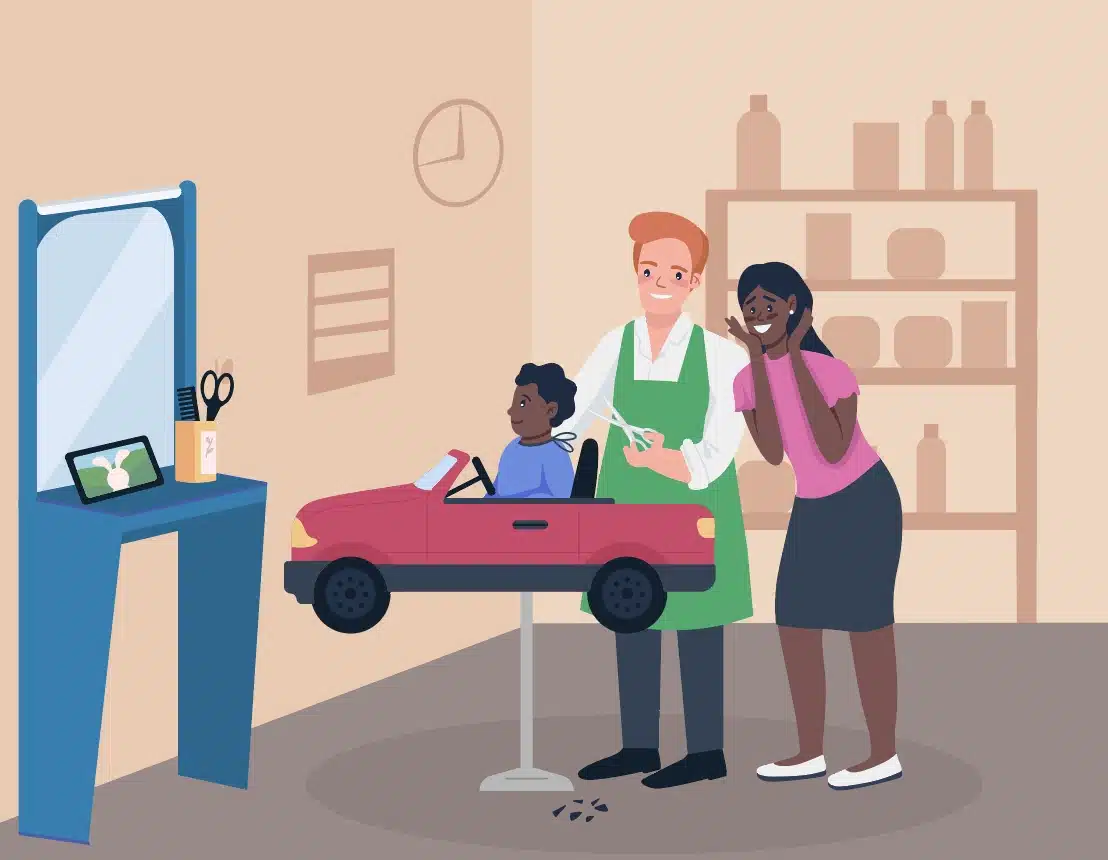By: Christine Hemelians, MSOT, OTR/L
Sensory processing disorder affects participation in everyday self-care tasks such as grooming, feeding, and getting dressed. Children who have difficulty with sensory processing may have difficulty getting a haircut. This post will help shed some light as to why children with sensory processing issues struggle with haircuts and offer some tips and strategies to prepare for a haircut.
Why do children struggle with haircuts?
Children with Autism spectrum disorder or sensory processing disorder tend to demonstrate difficulty responding to sensory stimuli, including tactile and auditory. Haircuts involve everything that is distressing for the child who is sensory-sensitive. If a child is sensitive to light touch, they might have difficulty tolerating the cape, the hairdresser’s fingers running through their hair, the combs, the scissors, or the clippers touching their scalp, as well as the neck, ears, and head. They have no control in that situation and as a result go into “fight or flight” mode. This may result in screaming, hitting, kicking, and more. In addition, those that struggle with auditory sensitivity and noisy environments will also have difficulty in this setting. The hair salon is filled with a variety of alerting noises that can trigger the nervous system to go into overdrive, such as: scissors snipping, buzzers buzzing, water bottles squirting, and dryers blowing. Furthermore, going to get a haircut is not usually within a child’s normal, scheduled routing. Haircuts are typically unpredictable and unfamiliar, which can increase anxiety and fear.
Tips/ Strategies to prepare for your trip to the hair salon:
- Role-play haircuts with your child- you can give pretend haircuts to each other or even with stuffed animals. Try using fake/ toy scissors
- Use social stories to help your child prepare for what will occur during a haircut- visit a social story app that covers the topic of haircuts “Model Me Going Places” @ YourKidsOT.com
- Read books about getting haircuts
- Pick a salon that’s right for you and visit prior to the real visit- if your child prefers an environment that is smaller, and less crowded, choose a salon that fits your child’s sensory needs. You can also call the salon to see when they’re less busy and schedule an appointment during those times.
- Have your child observe a family member getting their hair cut, or schedule your own haircut with theirs!
- Bring a weighted blanket, lap pad, or shoulder pad for additional deep/calming pressure
- You can provide deep pressure to the scalp and neck prior to the hair cut – provide a scalp/neck massage or use a vibrating hairbrush
- Block out noise of the scissors/clippers – you can use earplugs or earbuds and play calming music. Or if they’re comfortable, you can cover their ears while providing deep squeezes.
- Have them bring a preferred object/toy as a source of comfort – this can include fidget toys, or any calming toys/tools, or a chewy necklace, or sucker.
- Try to use a visual timer to help your child understand how long the haircut will last- you can also create a music playlist or a video of a certain duration to indicate that once the playlist is done, the haircut is done.
If your child has sensory processing challenges or difficulty with grooming, contact us today for a free consultation with an occupational therapist.




